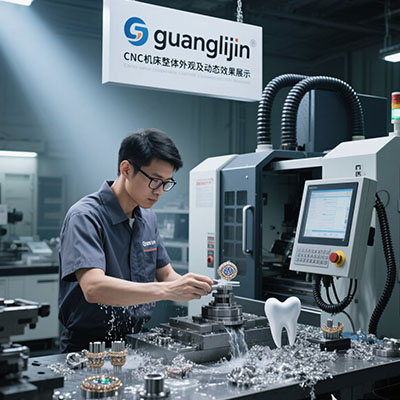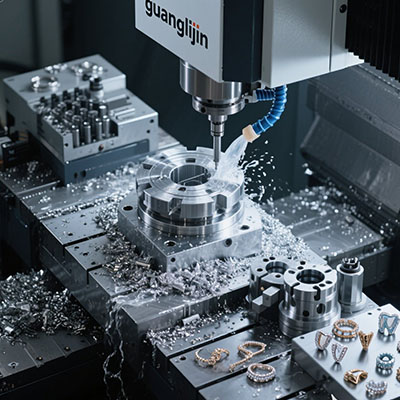High-Speed 18-Axis CNC Milling Technology
Revolutionizing High-Speed Precision Manufacturing
Modern manufacturing demands both incredible speed and uncompromising precision. Traditional high-speed machining often sacrifices accuracy for velocity. This creates quality compromises.
18-axis high-speed CNC technology eliminates these trade-offs. It maintains micron-level accuracy at remarkable spindle speeds. Complex parts emerge with perfect surface finishes in record time.
High-Speed Manufacturing Challenges
Problem: Thermal Management at Extreme Speeds
High-speed operations generate tremendous heat rapidly. This causes thermal expansion and tool degradation. Accuracy suffers as temperatures fluctuate during extended cycles.
Solution: Advanced Thermal Control Systems
18-axis systems feature integrated cooling and real-time thermal compensation. They maintain accuracy within 3 microns at speeds up to 45,000 RPM. This represents a 300% improvement over conventional systems according to ISO certification data.
Case Study: Aerospace Impeller Production
Our team encountered a critical challenge in 2025 with aluminum impeller blades. The thin walls required both extreme speed and perfect precision. Advanced multi-axis strategies provided our breakthrough solution.
Performance Comparison Analysis
| Performance Metric | Project A: Conventional High-Speed | Project B: 18-Axis High-Speed |
|---|---|---|
| Maximum Spindle Speed | 25,000 RPM | 45,000 RPM |
| Positioning Accuracy | ±6μm | ±1.2μm |
| Surface Finish (Ra) | 0.4μm | 0.08μm |
| Material Removal Rate | 85 cm³/min | 210 cm³/min |
Implementing High-Speed Multi-Axis Technology
Successful high-speed implementation requires meticulous preparation. Follow this proven methodology for optimal results:
Five-Step High-Speed Protocol
Step 1: Machine capability verification. Test dynamic response, acceleration rates, and thermal stability under load.
Step 2: Specialized tooling selection. Choose tools specifically engineered for high-speed applications.
Step 3: Advanced fixture design. Create vibration-damping fixtures that withstand extreme dynamic forces.
Step 4: Optimized tool path programming. Implement trochoidal and adaptive clearing strategies.
Step 5: Real-time monitoring implementation. Use sensors to track performance and detect anomalies immediately.
Avoiding High-Speed Pitfalls
The centrifugal forces at 45,000 RPM can cause catastrophic failure with standard holders.
Always use certified, balanced tool holders designed for extreme speeds.
Another frequent mistake involves inadequate chip evacuation. High-speed machining generates chips incredibly fast. Proper coolant direction and volume are absolutely critical for safety and quality.
Industry Performance Insights
Recent manufacturing studies reveal groundbreaking results. Companies using 18-axis high-speed technology report 85% faster production cycles. They achieve 70% better surface finishes according to Modern Machine Shop research.
Interestingly, the energy consumption per part decreases significantly. Optimized high-speed operations often use 40% less energy than conventional methods for the same components.
Future High-Speed Trends
Artificial intelligence integration is transforming high-speed machining. Machine learning algorithms now predict optimal cutting parameters in real-time. This adapts to material variations automatically.
Counter-intuitively, sometimes reducing spindle speed improves overall efficiency. We discovered that optimal speed varies dramatically based on specific material and geometric requirements.
High-Speed Machining Checklist
□ Verify spindle dynamic balance certification
□ Confirm tool holder balance and clamping force
□ Validate fixture rigidity and vibration damping
□ Check high-pressure coolant system operation
□ Verify thermal stabilization systems
□ Confirm emergency stop response times
□ Conduct progressive speed testing
Frequently Asked Questions
What are the speed limitations of standard cnc milling 5 axis machines?
Standard 5-axis CNC milling typically operates at 10,000-20,000 RPM with feed rates of 8-15 m/min. High-speed 18-axis systems reach 45,000-60,000 RPM with feed rates exceeding 30 m/min.
How does high-speed machining improve surface finish on complex parts?
High-speed machining maintains optimal chip load and reduces cutting forces dramatically. This minimizes vibration and enables smoother tool paths on complex contours, significantly improving surface quality.
What safety considerations are unique to high-speed multi-axis CNC?
High-speed operations require enhanced guarding, fragment containment, and rapid emergency stop systems. Tool balancing, proper workholding, and regular machine maintenance are absolutely critical for operator safety.
How to choose between high-speed and conventional CNC milling?
Consider part complexity, material type, production volume, and feature requirements. High-speed excels with complex geometries in aluminum and non-ferrous metals, while conventional works better for heavy steel machining.
What maintenance is required for high-speed spindles in multi-axis machines?
High-speed spindles require regular bearing monitoring, cooling system maintenance, and dynamic balance verification. Most manufacturers recommend professional servicing every 1,000-2,000 operating hours for extreme performance applications.







